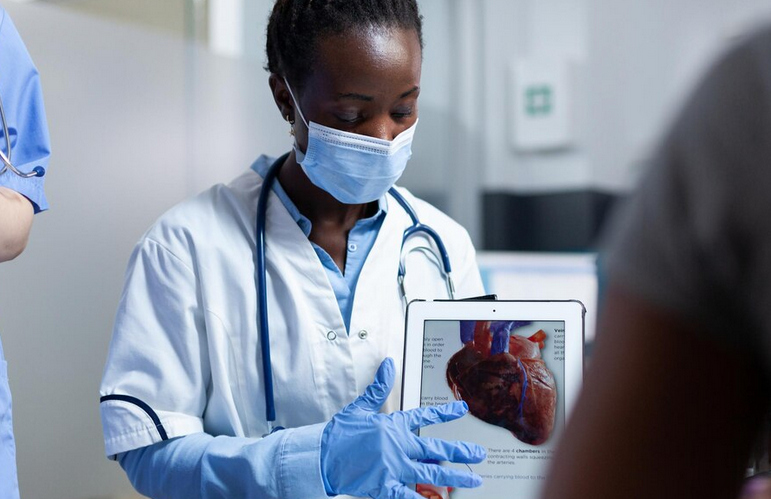
How to prevent a stroke
World Stroke Day is celebrated annually on October 29.
Cardiac complications frequently occur in the first few days following an ischemic stroke.
In Summary

The Vatican on Monday announced that Pope Francis had passed away due to a stroke
followed by irreversible heart failure, medically referred to as
cardiocirculatory collapse.
The
official certification of death was issued by Andrea Arcangeli, Director of the
Directorate of Health and Hygiene of the Vatican City State.
According to the medical report, the Pope had a
significant history of underlying health conditions, including acute
respiratory failure caused by multimicrobial bilateral pneumonia, multiple
bronchiectases (chronic lung infections leading to abnormal widening of the
airways), high blood pressure (hypertension) and type II diabetes mellitus.
“His
death was confirmed through electrocardiographic thanatography. I hereby
declare, that the causes of death, to the best of my knowledge and judgment,
are as stated above,” Arcangeli said.
Pope
Francis died on Easter Monday, April 21, 2025.
What is a stroke?
A stroke occurs when the blood supply to part of the brain is suddenly interrupted, depriving brain tissue of oxygen and nutrients.
Strokes are medical emergencies and require immediate attention.
There
are two primary types; Ischemic stroke (the most common), caused by a blood clot blocking
an artery in the brain, and hemorrhagic stroke, which occurs when a weakened blood
vessel ruptures and bleeds into the surrounding brain tissue.
Depending
on the region of the brain affected and the severity of the event, a stroke can
lead to localized damage or systemic complications.
When
critical autonomic centers in the brainstem are affected—those responsible for
regulating heartbeat, breathing, and blood pressure—the consequences can be
rapidly fatal.
Symptoms
of a stroke include sudden
numbness or weakness (especially on one side), trouble speaking or understanding, vision problems, dizziness or loss of
balance, and severe
headache with no known cause.
How a stroke can lead to heart failure
In
severe strokes, especially those involving the brainstem or those that result
in brain swelling and increased intracranial pressure, the body may enter a
state of physiological crisis.
This
often includes a surge in stress hormones
like adrenaline, disruption of the brain’s control over the heart and lungs, irregular
heart rhythms (arrhythmias), respiratory
failure and sudden drops in blood pressure.
This
complex cascade can overwhelm the heart, leading to a condition called neurogenic heart syndrome or stroke-heart
syndrome.
The
heart becomes stunned—unable to pump efficiently—despite not being directly
damaged by a cardiac event.
According
to The Lancet Neurology, cardiac complications frequently
occur in the first few days following an ischemic stroke.
These
can manifest as myocardial injury (heart muscle damage), cardiac
dysfunction (reduced pumping capacity) and arrhythmias
(irregular heartbeat).
In some patients, especially those with preexisting cardiovascular conditions, these complications can escalate into irreversible cardiocirculatory collapse.
Lone Star Neurology says to prevent a stroke, one should maintain a healthy lifestyle, manage chronic conditions, have regular health check-ups, know their family history and stay hydrated.
It emphasises the need to safeguard cardiovascular health by understanding how to reduce the risk of stroke.
Lone Star Neurology notes that it is often a result of interrupted blood flow to the brain, which can have severe consequences.
What is Irreversible cardiocirculatory collapse?
Irreversible
cardiocirculatory collapse is the terminal stage of cardiovascular failure.
It
refers to a state where the heart is no longer able to pump blood effectively,
causing a rapid decline in circulation to vital organs.
Key characteristics include severe drop in blood
pressure, inability of the heart to maintain adequate cardiac output and progressive
multi-organ failure, including the brain, kidneys, liver and
lungs.
Once
this stage is reached, resuscitation efforts are often unsuccessful,
particularly in elderly or critically ill patients.
Its
causes include massive myocardial infarction (heart attack),
septic
shock (overwhelming infection), anaphylaxis (severe allergic reaction),
hypovolemia (severe blood or fluid loss)
and advanced heart failure.
How it is diagnosed
Stroke can
be diagnosed by CT scan (to distinguish between ischemic and hemorrhagic), MRI (more sensitive for early ischemia) and blood tests, ECG, carotid Doppler, and echocardiogram
Acute treatment
For
Ischemic stroke, it includes tPA
(alteplase), a clot-busting drug (within 4.5 hours of onset), mechanical thrombectomy:
physically removing the clot (within 6–24 hrs in select patients) and antiplatelets/anticoagulants
depending on cause.
For
Hemorrhagic stroke, it includes controlling bleeding and reducing ICP, reversing anticoagulation if the patient is on blood thinners, and surgery: craniotomy
or ventricular drainage.
A high-risk patient profile
Pope
Francis’ medical history placed him in a high-risk category for both stroke and
heart failure.
His
chronic lung disease, previous infections, hypertension and diabetes all
contributed to vascular and systemic stress.
These conditions likely reduced his body’s resilience in the face of a major cerebrovascular event.

World Stroke Day is celebrated annually on October 29.

The pope died on April 21, 2025